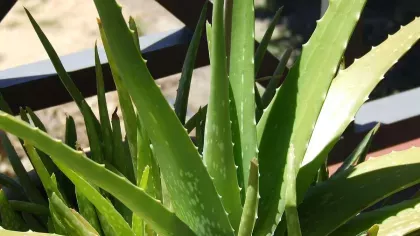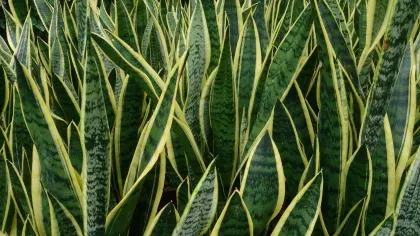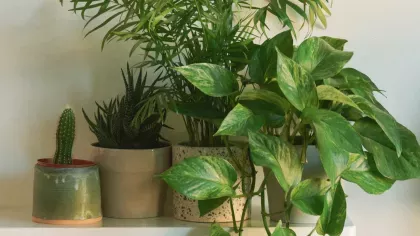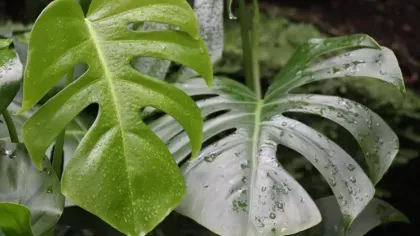
Snake plant
On this page
Its low maintenance and potential health benefits make the snake plant a sought after houseplant.
Snake plants keep their stomata (microscopic pores on the leaves) closed during the day to reduce loss of water, while their opening during the night boosts the conversion of carbon dioxide to oxygen – while higher oxygen concentrations have been shown to help improve sleep quality, you'd need to fill your room with snake plants to gain any noticeable benefit!
Selective breeding by horticulturists has resulted in varieties of Dracaena trifasciata, with the most known being 'Moonshine' and 'Bantel’s Sensation'.
In the wild, snake plants can grow up to 2 metres (6 feet) tall, yet most kept as houseplants usually reach around 0.7 – 1 metre (2.3 – 3.2 feet).
Plant description
Dracaena trifasciata is a flowering plant, native to West and West Central Africa and accustomed to dry, tropical climates. It has web-like underground roots and thick, sword-shaped leaves with a unique banded pattern. It can flower once a year, producing clusters of cream-coloured flowers, that may develop into small orange fruits.
Dracaena trifasciata is now commonly cultivated and distributed around the world as a houseplant.




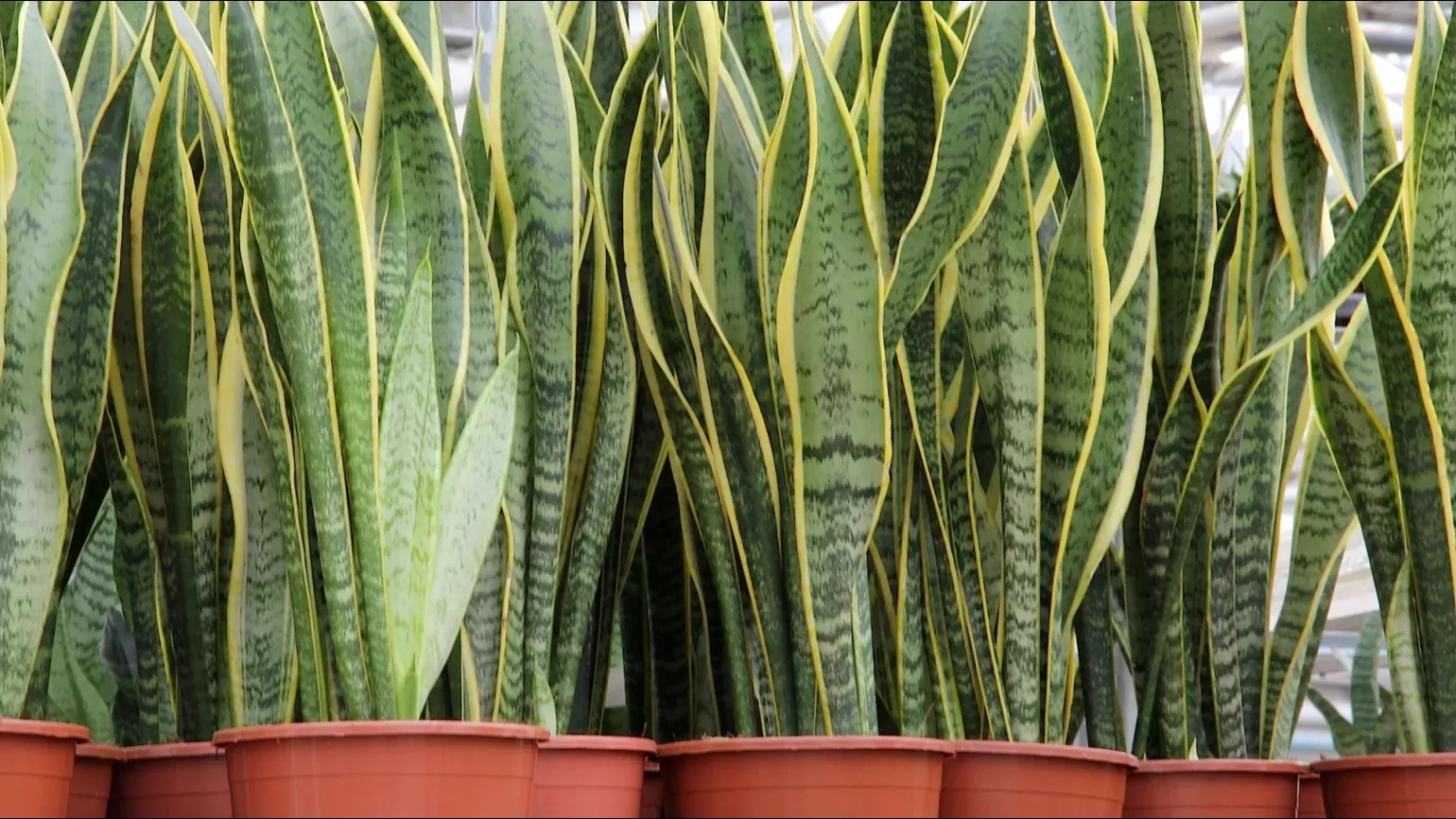

Plant uses
Cultural
Fibres made from snake plants are used by African communities to produce eco-friendly and biodegradable ropes, yarn and textiles.
Indigenous populations in Malaysia have used the snake plant to treat ear infections and swelling.
Health
The snake plant is a suitable plant for indoor landscaping. There is evidence that greenery in daily spaces can help increase concentration levels, lower stress and minimise risk of cardiovascular diseases.
Researchers have found proteins in the snake plant that show potential in slowing down the movement of cancer cells.
In other studies, scientists found that special compounds found in Dracaena trifasciata might be successful in treating alopecia.
Did you know?
A research study by NASA found that snake plants are able to draw pollutants like benzene and formaldehyde from the air.
The snake plant’s striped pattern is not only beautiful but also serves a defence function, allowing the plant to better blend into its natural environment.
Dracaena trifasciata is also known by other common names – Mother-In-Law’s tongue thanks to the visual association with sharp leaves or as African bowstring hemp as its fibres can be used to make bowstrings.
The snake plant is such a vigorous grower that their strong root systems can actually break through their pots.
In some parts of the world, like Brazil, snake plant is considered an invasive species.
The name Dracaena means 'female dragon' in Greek, while trifasciata means 'three bundles' in Latin.
Where in the world?

Rocky and dry areas in West Tropical Africa
Find it in our gardens
Kew Gardens
A botanic garden in southwest London with the world’s most diverse living plant collection.
Location
View map of Kew GardensBest time to see
Our work
The snake plant has gone through a history of renaming. It was first grouped with Aloe by Carl Linnaeus in 1753.
In 1903 it was morphologically identified in the genus Sansevieria by David Prain, a botanist at the time who noted Sansevieria trifasciata in his checklist of 'Bengal Plants'.
In 1905, David Prain became the director of Royal Botanic Gardens, Kew.
Modern genome sequencing, with the help of the DNA Bank at Royal Botanic Gardens, Kew, has enabled more precise investigations, placing the snake plant under the correct Dracaena genus in 2017.
The now official name, Draceaena trifasciata, was published in 2017 in Mabberley's Plant-book, whose author, David John Mabberley, works as a keeper of the Herbarium at Royal Botanic Gardens, Kew.
